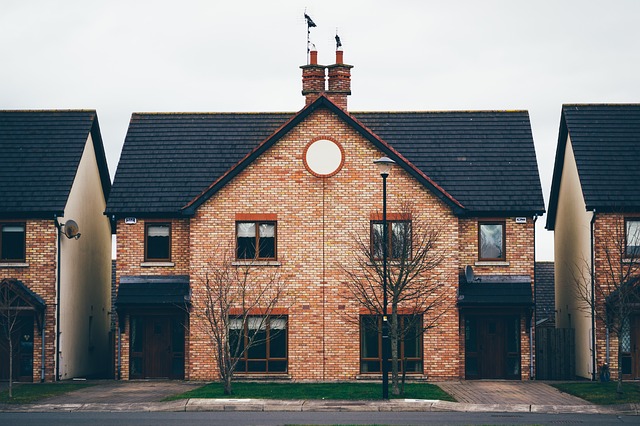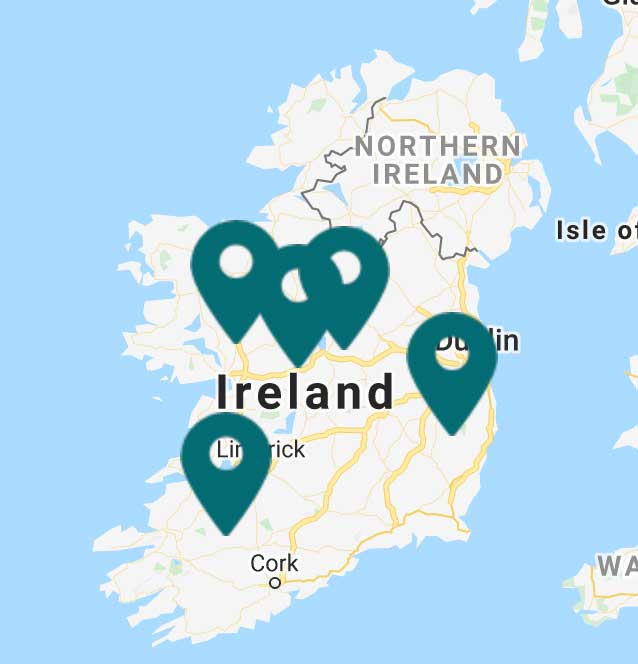
Buying a new home can be an exciting and frustrating experience all at the same time. With potentially hundreds of thousand of Euro on the line, it’s important to find a good buy that is suitable for your family. You might be looking for a home that’s move in ready, or maybe you’re not afraid of a bit of work and are looking for a property that you can fix up to make your own. Whatever the case may be, purchasing a home is a big investment that shouldn’t be taken lightly. If you’re taking out a mortgage you may be stuck with payments for the next few decades!
To avoid buyers remorse, let’s take a look at our top 8 tips to look out for when you’re in the market for a new home.
1. Don’t just consider the house
When you’re out and about looking for that perfect house, it can be easy to forget that you won’t just be living in a house, you’ll become a part of the neighbourhood. When viewing a home, take note of the immediate surroundings and the amenities that are important to you.
- Is it close by to a shop?
- Is there public transportation available within a short distance?
- Is it right next to a pub that may get loud at night and at weekends?
- What’s the demographics of the area? Is it families with young children or students? Is the home surrounded by renters or owner-occupied homes?
- Is the home on a busy road, near train tracks or close to an airport?
Before you even start looking at homes, make a list of what you consider your must-haves, what would be nice to have and things that you could live without. Whenever you view a house bring the checklist with you and check off the items as you go. You may see your priorities changing as you make your way from house to house during the buying process. While you may not find it possible to check every item off the list, it should help weed out the homes that don’t meet your criteria.
2. Look at the annual running costs
If you’ve owned a home or rented in the past, you’ll know that a home costs money beyond the mortgage or rent amount. You’ll want to take into consideration the local property tax, cost of home insurance, your monthly utilities and even your commute to work. Know what you’re monthly budget is and stick to it. There’s nothing worse than buying a house only to find out you can’t afford to run and maintain the home.
Speak to the local utility providers (think electricity and gas) and ask for the average monthly amount. Your goal shouldn’t be to break even every month. If you can afford the house you should be able to continue putting money into savings.
3. Think about energy efficiency
Energy efficiency not only goes hand in hand with the annual running costs, but also how comfortable you’ll be in your new home and the impact it has on the environment (think carbon footprint). The more energy efficient your home is, the less you’ll spend on heating and cooling, hot water and electricity.
All homes, whether for sale or for rent, must come with a Building Energy Rating (BER) performed by a certified assessor. This report will give the home a letter grade from A1 to G (calculated by kWhr/m2/year) and the carbon dioxide emissions per year. The higher the rating, with A1 being the highest, the more energy efficient the home will be and the less you’ll spend on running costs.
An energy efficient home should be designed with insulation, air tightness and renewable energy in mind. The exterior walls of the home should be insulated with cavity wall insulation, internal dry lining or external wall insulation depending on the construction type of the house. The attic should be insulated with jackets on the hot and cold water tanks and pipe insulation along all the pipes. A well-insulated home should also have insulation in the floor or have been built with an insulated foundation system. In any case, you’ll want to ensure a new home complies with Part L of Ireland’s Building Regulations.
A home with a renewable energy source should further cut down on your annual running costs. If possible, look for a home with a solar water heating system, heat pump or a biomass boiler. If it’s an older home, you may consider installing a renewable energy source to help cut down on its running costs. There are numerous insulation grants and renewable energy grants available to reduce your out of pocket expense. You could even consider building a house to a low energy standard, like the Passive House Standard.
4. Look at the condition of the home
When purchasing a home it’s a good idea to make sure it’s in good shape before you exchange money and take ownership. While a visual inspection is a good place to start, we recommend hiring a third-party home surveyor to carry out a full, in-depth inspection to catch any issues the seller may have not known about or omitted from the listing. Buying a home with problems, big or small, could end up becoming a money pit. The inspection should check:
- The foundation of the home
- Structural elements including walls, ceilings, floors and roof
- Roof and attic including the condition of attic insulation, framing, ventilation and the type of roof construction
- Plumbing including toilets, sinks, vent pipes, drains and showers/baths
- The condition of oil or gas-fired boilers, hot and cold water tanks, immersion heaters, chimney and fire place
- The condition of the electricals including the main panel, circuit breakers, wiring, grounding, lighting fixtures and ceiling fans
- Home appliances including the kitchen stove, refrigerator, dishwasher, microwave, carbon monoxide and smoke detectors, home security systems etc.
While this is not an exhaustive list, it will give you a good place to start after you’ve found a home and are considering placing an offer. Don’t consider every problem a deal breaker, but know how much you’re willing to spend on renovations and repairs, especially if you’re buying a second hand home. There are serious problems to look out for, such as problems with the foundation, significant health and safety issues, roofs that are in bad repair or need to be replaced and problems with the heating and cooling system. Look out for houses that have issues with mould, moisture or damp. If you find evidence of damp take a look at the condition of the home’s insulation, ventilation and overall airtightness.
Never feel pressured into buying a home that doesn’t meet your expectations. If you run into problem after problem and the seller is unwilling to repair, it may be best to walk away and find a home in better condition.
5. Take a look at the materials
While this may go together with the condition of the home it can often be overlooked if there is no visible damage. One material to look out for is pyrite. The Department of the Environment, Community and Local Government found that there may be over 10,000 homes that still have problems related to pyrite, while other reports put the total number at over 20,000. While pyrite itself may not be a problem, when exposed to oxygen and moisture this material may crack and expand. Problems could occur in the foundation, floors, interior and external walls. You may find cracks that won’t close or evidence that the external walls and foundation have moved from their original position.
Pyrite has been found in several housing estates in Dublin, Meath, Kildare, Offaly and other areas on the east cost of Ireland. The use of pyrite should be identified during a home survey. Fixing problems related to the use of pyrite could be expensive to fix, so be on the lookout when shopping around for new homes.
If purchasing an older home you’ll also want to look out for lead in old paint and lead pipes used for water. Both can cause serious problems to the health of the home’s occupants and should be avoided or replaced as soon as possible.
Radon, a naturally occurring and radioactive gas may also be found in homes across Ireland. The Environmental Protection Agency offers an online interactive map that outlines areas with a high incidence of radon. While low levels of radon may not be a cause for alarm, levels that exceed 200 Bq/m3 should be identified and remedied. Solutions include active and passive radon sumps and increasing ventilation. Houses built after 1 July, 1998 should already be fitted with a standby radon sump, and homes in areas with high radon levels should be built with both a radon barrier and standby sump.
6. See what else is being planned nearby the home
If you’re buying a home for the view make sure it’s going to last! As the construction sector continues to grow in Ireland we should see an increase in planning permission and new projects across the country. Check with the Local Authority to see if there is anything planned in the area surrounding the home. It may not be a bad idea to read the local news to check out the area’s plans for the future or have a short discussion with your potential neighbours. It may be well worth the short amount of time it takes to ensure you’re not living beside a busy new shopping centre in the months or years ahead.
It’s also a good idea to see if any planning has been refused, like home additions, especially if you plan on renovating or adding space later on.
You can search planning permissions in your Local Authority on the government website.
7. Don’t ignore the signs of flooding
A home that has previously flooded should be a major concern and should be declared by the seller. The home doesn’t necessarily need to be located near a seaside or a riverbank to flood, so you should always be on the lookout for signs of flooding when viewing a home. Check the National Flood Hazard Mapping offered by The Office of Public Works. You can search by county and town right down to the street.
Inspect the grade around the foundation. A home that has flooded may have uneven ground around the foundation. Look for water stains on the side of the house, around the skirting board and on the floor joists. Be on the lookout for mould and mildew problems and always be careful when purchasing a home located near a body of water.
8. Stick to your budget
Owning a home is expensive. There are many variables you have to consider, from your monthly mortgage payment all the way down to the cost of your commute to work. Whatever you do, make sure you calculate your accurate monthly expenses and stick to your budget. There’s no point in buying if you’re going to be house poor with no money to spend.
Ensure you factor in your Local Property Tax, monthly mortgage payment, annual home insurance premium, mortgage protection insurance, survey fees, legal fees, expected home maintenance costs, running costs (heat, electricity, water etc.) and stamp duty. Consider the down payment if you aren’t paying cash for the home, which typically ranges anywhere from 10 to 20%. The more money you can put down up front, the less you’ll have to pay back and the more you’ll save on interest. Compare lenders when shopping around for a mortgage as some may run promotions that could save you money.
Don’t buy a house if you can’t afford the expense. There is no shame in renting a home and saving until you can truly afford the responsibility.

